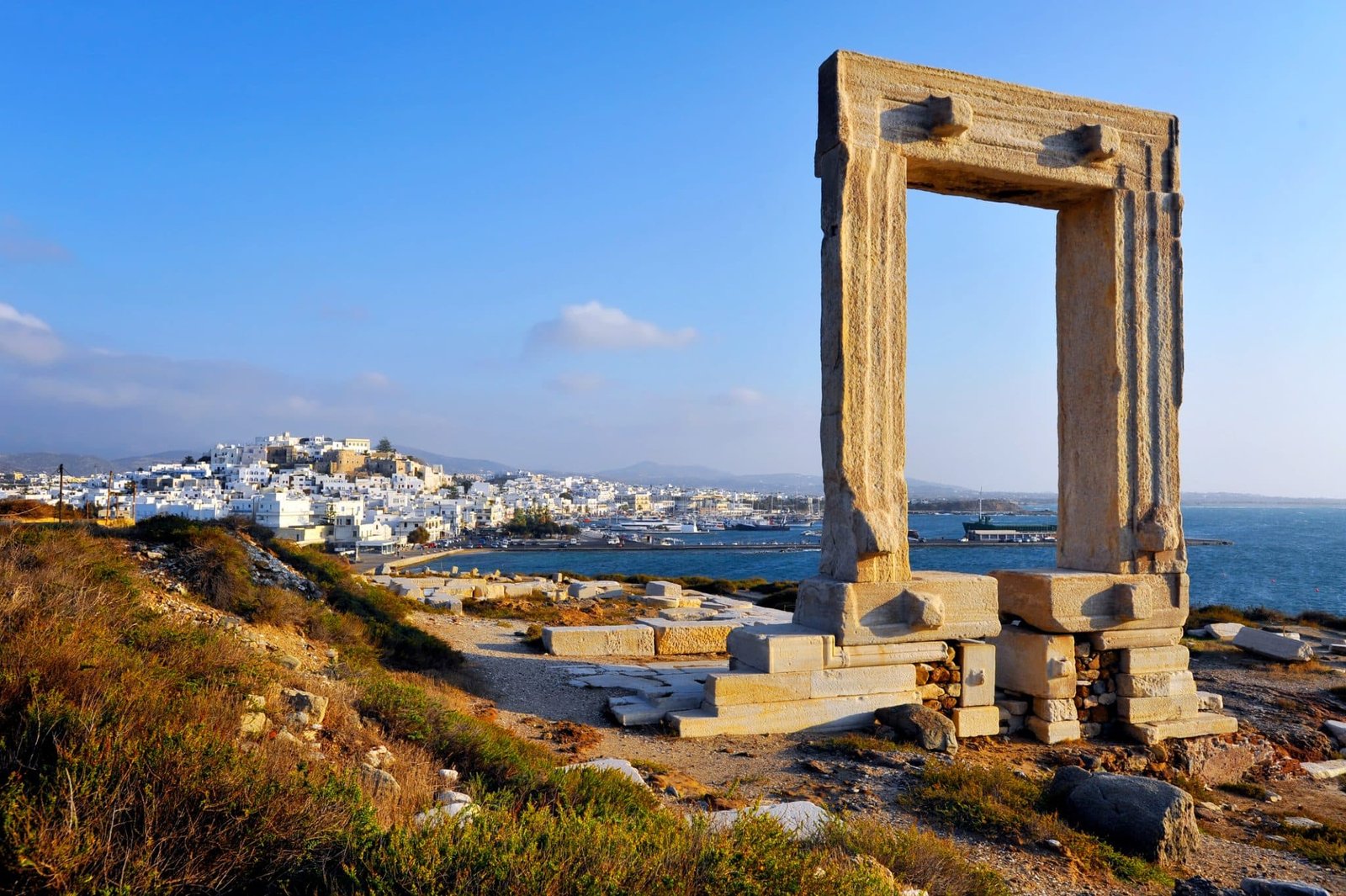By Zeus! The 12 Best Greek Islands For History Lovers & Why
|
Prefer listening over reading? We got you covered!
Getting your Trinity Audio player ready...
|
Greece is a land steeped in history, mythology, and ancient civilization. But with so many stunning islands to choose from, it can be hard to know which ones are the best for history lovers – that’s where we can help!
From Minoan palaces and mediaeval fortresses, to temples, ancient ruins and incredible mythology, we know the best spots for history across the Greek islands.
So whether you’re a seasoned traveller or just starting to explore the rich history of Greece, these ten islands we’ve picked out below are sure to captivate you with their timeless beauty and fascinating heritage!
Here are 12 of the best Greek islands for history lovers!

1. Crete
Located in the eastern Mediterranean, Crete is an extremely popular destination for history lovers.
With a rich and diverse history dating back thousands of years, the island has a number of famous historical sites to visit.
In fact, Crete is home to the oldest civilization in Europe, existing in the Bronze Age, the Minoans civilization. Considered as one of the first advanced civilizations of its time and place, the Minoans achieved great architectural and engineering feats that stand to this day.
Crete has four ancient Minoan palaces: Knossos, Phaistos, Malia, and Kato Zakros.
The Palace of Knossos (photo above) is one of the most famous and well-preserved, dating back to around 1700 BC. Knossos features elaborate frescoes, throne rooms, and courtyards, and was likely the centre of Minoan power and culture.
And if you visit these palaces at sunset, when there are fewer crowds, it may even feel like you have time-travelled back to ancient times!
Other historical sites in Crete are equally intriguing, such as the Monastery of Arkadi, located in the mountains of Crete, the archaeological museum in Heraklion, and the Venetian Walls of Rethymnon, a 16th-century fortification that is a well-preserved example of Venetian architecture.
Crete is also the birthplace of the mythological King Minos, who had built the labyrinth that held the wild beast Minotaur.

2. Rhodes
Rhodes is another exceptional place when it comes to history.
This island is home to Rhodes Old Town, one of Europe’s best preserved mediaeval towns that is also a UNESCO World Heritage Site.
Rhodes Old Town has everything a history lover would enjoy – it is a maze of narrow cobblestone streets, dotted with an eclectic mix of architecture styles.
Here you will see Byzantine churches, Ottoman mosques, Italian Renaissance-style villas, and the magnificent Gothic-style Palace of the Grand Master from the 14th century.
For more incredible views and sightseeing, head over to Lindos, a pretty coastal village with whitewashed buildings and an archaeological site that is the second-most visited in Greece.
Lindos is remarkably well-preserved and packed with historical artefacts and buildings: look out for the frescoes, art and walls of the church that tell the story of the town’s history.
Other sites such as the Lindos Acropolis, the ruins of which date back thousands of years, and the Theatre of Athena, with its original staircase that leads to the acropolis’ highest point, are also interesting to explore.

3. Delos
When talking about the mythology and history of Greece, one cannot miss Delos.
This small and mysterious island in the Aegean Sea is actually one of the most important archaeological sites in Greece. A bustling religious centre during the 1st millennium BC, Delos was considered the most sacred of all islands.
Much later, Greek mythology designated Delos to be the birthplace of the twin gods Apollo and Artemis.
Because Delos is a UNESCO World Heritage Site, it attracts archaeologists and history buffs from all over the world. No wonder too, as it’s home to the ruins of many important cultural and religious structures from ancient Greece.
The Temple of Delians in the Sanctuary of Apollo is the most well-known. The Terrace of Lions is a row of marble lions that guarded the Sanctuary in the past. The House of Dolphins, a wealthy merchant’s house from the 2nd century BC, and an amphitheatre, one of the largest in Greece, are also popular attractions.
Delos has been uninhabited for centuries, so you cannot stay overnight there. But day trips can be made conveniently from the nearby islands of Mykonos, Paros or Naxos, and it’s totally worth it.

4. Santorini
Think of Santorini and you’ll likely have images of whitewashed houses with bright blue domes perched atop a hill overlooking the sea. But Santorini is not only a picturesque holiday destination – it’s also one of the best Greek Islands for history too.
History lovers flock to Santorini because it’s home to an important archaeological site, Akrotiri. The settlement of Akrotiri was a bustling port, until a massive volcanic eruption in the 16th century BC buried and preserved the city.
This eruption is thought to be the most powerful in recorded history, and it effectively ended the Minoan Civilization. The fascinating Museum of Prehistoric Thera displays ancient artefacts from Akrotiri.
Speaking of museums, the Archaeological Museum, the Museum of Folkloric Art, and the Naval Museum are all worthwhile stops.
There’s also the Wine Museum. Fun fact: did you know Santorini is known for having more wine than water, because it hardly rains there?
Another attraction to visit is Ancient Thera. This ancient city is located on a hill, so it is a fun hike to the top with great views. Ancient Thera houses some well-preserved ruins of temples, houses and other ancient structures.

5. Samos
The island of Samos has a fascinating history. A rich and powerful island, Samos had a booming business of Samian wines and red pottery around the 7th century BC. Its naval prowess was also no less than extraordinary for that time.
During its history, Samos has been ruled by an array of Persian, Greek and Ottoman leaders, each marking their historical and cultural influences on the island.
Samos is the birthplace of some of the most well-known ancient Greek personalities that we have all read about: the philosopher Epicurus, the storyteller Aesop and the great mathematician Pythagoras.
The town of Pythagorion is named after the mathematician and is a popular and charming historic town. With three millennia of history, it is no wonder that Pythagorion is a UNESCO World Heritage Site with plenty of historical structures to see in and around it.
Visit the Archaeological Museum of Pythagorion and see rare ancient artefacts from nearby sites and from the Heraion. The Heraion is the ruins of the Sanctuary of Hera, the queen of the Greek gods.
The Temple of Hera was once a magnificent building, gigantic for its time. Only a column remains of the temple now, as a reminder of its greatness.
The monastery of the Virgin Mary of Spiliani is another must-see site, built in a man-made cave near Pythagorion. The cave is believed to have been built before the time of Pythagoras and has been a place of worship since.

6. Corfu
Corfu is a popular island in Greece for many reasons, one of which is its unique history and culture. The existence of Corfu goes back thousands of years, like many other Greek islands.
Corfu Old Town is a UNESCO World Heritage Site. Its streets and architecture display a mix of historical influences that include Roman, Byzantine, French, Greek, Venetian and British.
Walking on the streets of the Old Town, you will feel you’re on a trip back in time.
In particular, the Church of Saint Spyridon is a sight you cannot miss. The red-domed top of the church’s bell tower dominates the skyline, as it is the tallest structure of its kind across all the nearby islands. The church’s impressive interior also houses intricate frescoes and the remains of Corfu’s patron saint.
The Byzantine style Angelokastro Castle is another attraction on Corfu. Also known as the Castle of Angels, this fortress is perched atop a mountain overlooking the sea and offers some amazing views of the island’s coast.
History nerds can also check out the Achilleion Palace, located in the small village of Gastouri, the ruins of Paleopolis near the Mon Repos Palace, and the Kardaki temple.

7. Naxos
Although Naxos has mostly been under the radar, it is one of the most interesting Greek islands, especially if you’re seeking out history and mythology.
In Greek mythology, Naxos is where the god Zeus was born and raised. It is also where the stories of other mythological characters Dionysus, Theseus and Ariadne take place.
Naxos has plenty of intriguing historical sights to visit and see, and the island has some stunning natural scenery with green valleys and mountains. Among these are hiking trails that lead to several Byzantine-era churches which you can explore.
The streets of Naxos are equally charming. The Old Town has a well-preserved Venetian castle and the Archaeological Museum of Naxos, which showcases artefacts from the Minoan and Mycenaean periods.
Temples were a favourite with the ancient Greeks, and the Ancient Temple of Dionysus and the Temple of Demeter are some excellent ones you can visit while on Naxos.
But the most iconic and well-known structure in Naxos is the Portara, or the Great Door. Located on a tiny islet nearby, this mysterious structure is a massive marble doorway, believed to once be a part of the Temple of Apollo.

8. Aegina
Aegina is a perfect day trip away from Athens, packed with plenty of historical sites to visit and enjoy.
The island is located in the Saronic Gulf and known for its rich history and culture. And in ancient times, Aegina was a centre of trade and commerce, and was famous for the production of silver coins, competing mainly with Athens.
The first place to visit is the Temple of Aphaia, a stunning temple dedicated to the goddess of the same name.
The temple dates back to the 5th century BCE and stands well-preserved to this day. This temple is one of three ancient temples that form the “Sacred Triangle”, with the other two being the Temple of Poseidon in Sounion and the Acropolis.
Right next to the temple is the museum of Aphaia, that displays a variety of artefacts.
The Temple of Apollo on a small hill near the port is another iconic structure. Older than the Acropolis of Athens, this temple has only one column that remains standing.
And the nearby old town of Aegina is essentially an open-air museum, with gorgeous architecture, including the Agion Theodoron Church, the Tower of Markellos and the Archaeological Museum of Aegina.

9. Kos
One of the most iconic of the Greek islands, Kos is home to a wealth of archaeological sites and places that would delight any history lover.
Located near the coast of Turkey in the Aegean Sea, Kos is one of the largest and most popular islands. But between its sandy beaches and sheer cliffs, Kos has a variety of historical attractions, including medieval castles, charming villages and of course, Greek temples.
The old town of Kos used to be an important city, and the ruins and remains of its architecture are testament to the fact.
Marvel at the Asklepieion sanctuary, an ancient healing complex that was dedicated to the god of healing. The Temple of Asklepios was also one of the most famous religious and medical center in the ancient world. The remains of the temple, an ancient theater, and other buildings offer a fascinating glimpse into the ancient world.
Kos is also known as the birthplace of the “Father of Medicine” Hippocrates. The Tree of Hippocrates is believed to have been planted by the famous physician himself, and is a protected monument.
Another interesting place to visit is the Antique Market, a bustling street filled with shops and stalls selling a variety of antique and vintage items to take as souvenirs.

10. Lemnos
Lemnos is another of the Greek islands with a fascinating history.
Most of Greek history is infused with mythology and Lemnos is no exception. According to one myth, the island was the home of the god of fire and volcanoes, while another myth linked Lemnos with an ancient Greek hero who was abandoned on the island.
But the true history of Lemnos can be seen through the remains of archaeological sites on the island.
Early settlements on Lemnos were from the Bronze Age. The ancient sites of Kavirio, Ancient Poliochni, and Ifestia are worth visiting. The Sanctuary of Kavirio is believed to have been built around as early as the 6th century BC. The site had a temple, an initiation hall, an arcade, and a palace.
The site of Ancient Poliochni is believed to be the oldest settlement in Europe. What’s fascinating is that archaeologists found four different settlements at the site, built on top of the other, with the oldest dating back to 4000 BC!
According to legend, Lemnos was ruled by Amazon-like female warriors. The remains of an ancient settlement in Polichni revealed to have a peculiar civil structure, showing a female-dominated society, along with rock engravings portraying female archers.
The ancient site of Ifestia on Lemnos is a treat for history lovers visiting the Greek Islands too.
This site has the remains of a cemetery, baths, a theatre, a palace, and a sanctuary to a goddess, thought to be the deity of the matriarchal civilization.
Ifestia also has many ancient statues, of humans and monsters, and faded drawings dating back to the Amazon era.

11. Milos
This Greek island in the Aegean Sea has been inhabited for thousands of years, and was a cultural centre during the Bronze Age.
The ancient city of Phylakopi on Milos was a powerful and wealthy one. Despite being destroyed and rebuilt a few times over a thousand years, the ruins of Phylakopi preserved many great works of art, including vessels, sculptures, reliefs, and wall paintings. These are displayed in the Archaeological Museum of Milos.
But Milos is best known for the discovery of one of Greece’s most famous sculptures, the Venus de Milo statue, which depicts the ancient Greek goddess Aphrodite.
Mystery surrounds it, as the statue was found to be without arms. A replica of the statue stands in the Archaeological Museum of Milos.
Architecture such as the Ancient Theater and Venetian Castle of Milos stand today in the form of ruins, but are fascinating to see as well.
But perhaps the most important historical monument on Milos is the Catacombs. During the Roman era, Christianity spread rapidly. In around the 1st century, the catacombs were built and used as Christian cemeteries. Later, when Romans were persecuting Christians, these catacombs were used to take refuge and hide from the Romans.
If you’re visiting the Catacombs, you’ll be amazed to see that the entire maze of corridors, chambers and vaults/graves were actually dug underground out of volcanic rock. The maze was made to confuse the Romans. Definitely a must-visit!

12. Ikaria
Do you remember reading about the legend of Icarus? The son of a mythical Greek inventor, Icarus used wings made from feather and wax to escape captivity, but flew too close to the sun. The wings melted, and he fell into the sea, close to the island of Ikaria which was then named after him.
Apart from this association with the legend of Icarus, Ikaria is also known as one of the oldest inhabited islands in the Aegean Sea, dating back as early as 7000 BC.
Ikaria is a mix of lush scenery, rich culture and ancient history. Take a ferry or a flight from Athens to this island and start exploring its many sites and places.
The old town and the main port of Ikaria, Agios Kirikos, is the largest town on the island. This 300-year-old town has beautiful architecture among scenic pathways that makes for great sightseeing.
The iconic neoclassical building of the Ikaria Archaeological Museum and the Kampos Archaeological Museum are must-visits.
Then there are the ancient Greek temples, churches and castles scattered across the island. The Castle of Koskina, a Byzantine fort built in the 10th century, is a must visit and offers great views of the sea.
The Temple of Artemis is one of the oldest temples, while the Church of Agia Irini, is the oldest church. Ikaria is also home to the remains of an ancient theatre and Roman Baths near the old town.








